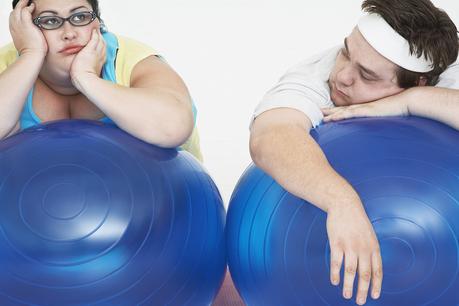You know you need to start working out, but where do you start? If you’re overweight, the thought of getting into a fitness routine may seem impossible. You may feel like you can’t do the same things as thinner people, that it might be painful or that you will be embarrassed. Don’t get discouraged, there are options!

First and foremost, you need to wholeheartedly make the commitment to making a change. Once you’ve made the commitment, the next step is to determine what type of exercise it right for you. Taking a progressive approach to fitness, where you start small and build on little by little, will likely yield better results than trying to jump in and shoot for the moon with your fitness goals. It is important to set goals and track your progress. Incorporating milestones into your fitness routine will not only help motivate you to keep going, but it will also help you develop your abilities further. Start as small as you want, but the most important part is to start somewhere!
Some activities are more suitable for larger exercisers. Walking, for example, is a low impact activity that improves strength and mobility in the lower body and requires no equipment except for a good pair of walking shoes. Your walking pace can be adjusted as you progress and just 10-15 minutes a day can make a difference. You can gradually add time and increase your pace as you feel comfortable. Pick a goal and work towards it! Moderate intensity can be achieved by reaching a 100 step per minute pace or 3000 steps in 30 minutes. An activity monitor a pedometer can help you track your progress.
Aqua jogging is also a great activity that is well suited for people who have painful joints or difficulty moving. Aqua jogging is simply running in the water with the help of a buoyancy belt. You are propelled by moving your legs against the water and your your feet are not to touch the bottom of the pool. Aqua jogging provides all the benefits of running or walking without the impact. A buoyancy belt is the only piece of equipment you will need for this activity and they come in a variety of sizes. It takes more effort than you might think, so it is best to start slowly and “test the waters” before you begin.
Strength training may not seem like an obvious place to start, but an overweight exerciser can see exceptional results from a strength training program. Strength training can correct postural issues that may arise from carrying extra weight and increase your range of motion. Lifting weights can be done in the comfort of your own home, but it may be in your best interest to work with a personal trainer to ensure correct form and to learn basic exercises. Since you can start with the lowest weight and work your way up, strength training is great for setting goals and progressing to new challenges. Best of all, building muscle through strength training will help boost your metabolism when your body is at rest. Win-win! Start slow and see how you feel. You don’t want to overdo it on day one and have to take time off right away.
These are just a few options out there. It’s up to you to choose an activity that fits your fitness goals and abilities. The most important part is getting started! Find something you enjoy and stick to it. Your body will thank you!
